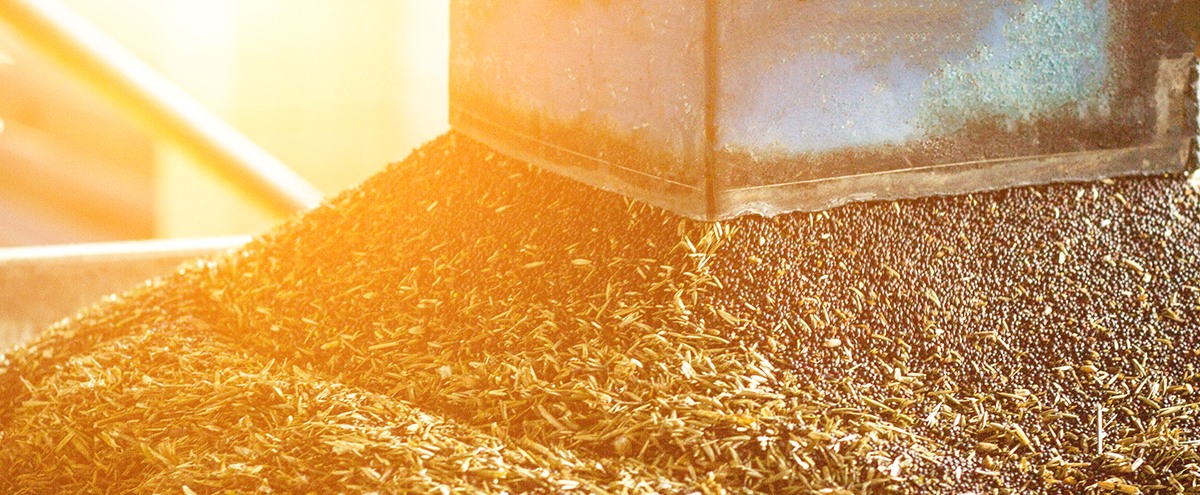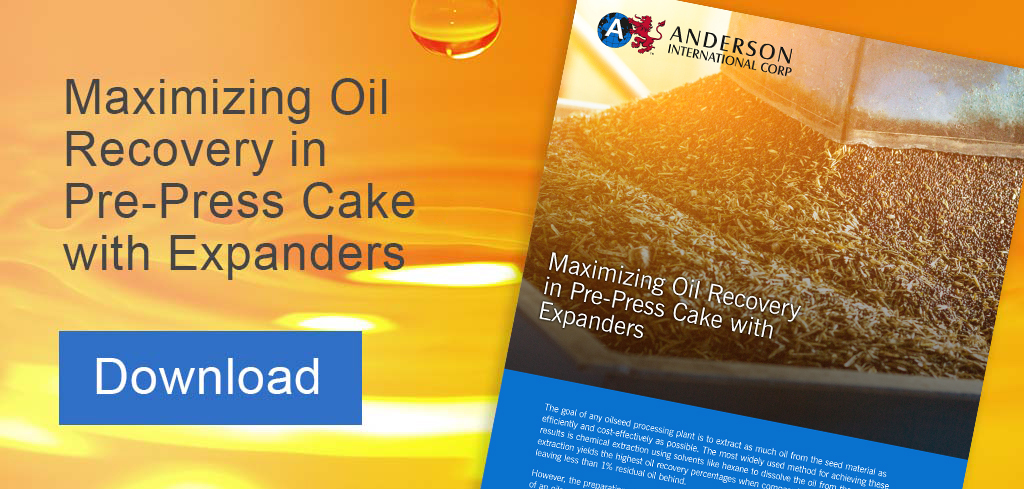
Processing seeds with high oil content demands extra preparation. Instead of sending cleaned, cooked, flaked material straight into the extractor, as with soybeans, oil-rich seeds like canola require additional pre-pressing first. This step is essential to prepare the material for extraction, but the resulting pre-press cake also presents some challenges throughout the extraction process.
To overcome these challenges and optimize every step of solvent extraction, processors can add another beneficial step between pre-pressing and extracting. By using an expander like the Anderson Solvex ™ to prepare pre-press cakes for optimal extraction, processors can improve efficiency, minimize operating costs, and maximize oil recovery.
This blog will explore how expanders can add efficiencies to pre-press cake processing.
What is a pre-press cake?
Most standard solvent extraction equipment is designed to process soybeans, the world’s highest-volume oilseed, which contains about 20% oil by weight. If you want to use this same equipment to process other oilseeds like canola, sunflower, peanuts, or corn germ—which contain at least twice as much oil by weight—then these high-fat seeds must be pre-pressed first.
During pre-pressing, a shaft propels the flaked material through a screw press with a perforated barrel. The press gently squeezes the seed material to reduce the oil content to 20%, so the resulting “pre-press cake” will behave more like soybean in the extractor.
Although this cake contains the proper fat content for extraction, the material isn’t the most conducive for solvent flow. The densely packed cake is irregularly shaped, so it doesn’t stack neatly inside the extractor—leaving pockets of empty space where the solvent can channel around the material instead of permeating it to dissolve the oil. This compressed material is more difficult for the solvent to penetrate and to drain out of, which means that extracting these cakes often leads to:
- Higher solvent use per ton of seed material
- Higher solvent holdup in the products
- Lower oil recovery
- Reduced extractor capacity
To maximize the extraction efficiency of this tricky material, processors can turn to expanders.
Learn more: The Difference Between Anderson Expanders and Extruders
Preparing pre-press cakes for extraction
Before Anderson International invented the expander in 1966, soybean flakes were the preferred material for oil extraction. But the expander provided a way to transform those thin flakes into a dense, porous material that’s more conducive to solvent extraction—instantly improving efficiency. Now, processors are realizing the same benefits with other high-fat oilseeds by using expanders to prepare pre-press cake for extraction.
By using steam-generated heat, a screw propels the pre-pressed product through the expander, generating a high-pressure, high-shear environment that quickly cooks and compresses the material. As this hot material exits the discharge openings under extreme pressure, the injected moisture suddenly expands and evaporates, leaving a network of pores where the solvent can freely flow. This porous material discharged from the expander, known as collets, can provide several important benefits throughout the solvent extraction process.
- Increased capacity
Because the expander compresses the seeds into a denser form, it frees up more capacity in the extractor—allowing 50% more material when using the Anderson Solvex. This extra capacity reduces energy consumption and decreases operational costs.
- Reduced solvent exposure
Solvents like hexane can flow much more freely and evenly through porous collets than through densely compressed cake. This means that the solvents can dissolve the fat more quickly and then drain out more effectively, reducing the amount of solvent required during extraction.
- Reduced solvent recovery
Because less solvent is used during extraction, less heat is required downstream to recover residual hexane left in the products. The Solvex reduces solvent holdup by 40% in solid products and by 20% in liquid products.
- Maximum oil recovery
Compared to dense pre-press cake, porous collets enable better permeation and drainage of the solvent, allowing processors to extract as much oil as possible. By using the Solvex to prepare pre-press cake for extraction, processors can achieve residual oil levels as low as 0.5%, compared to 1-2% residual oil levels without the expander.
In high-production oilseed processing plants, that small percentage change can equate to millions of dollars worth of oil. For example, suppose an average-sized solvent extraction plant running 2,000 metric tons of canola per day reduced residual oil levels from 2% to 1%. In that case, they could recapture more than $5 million of additional revenue in one year.
To learn more about the multi-million dollar benefits of using expanders to maximize solvent extraction in pre-press cake, contact an expert at Anderson International today.

